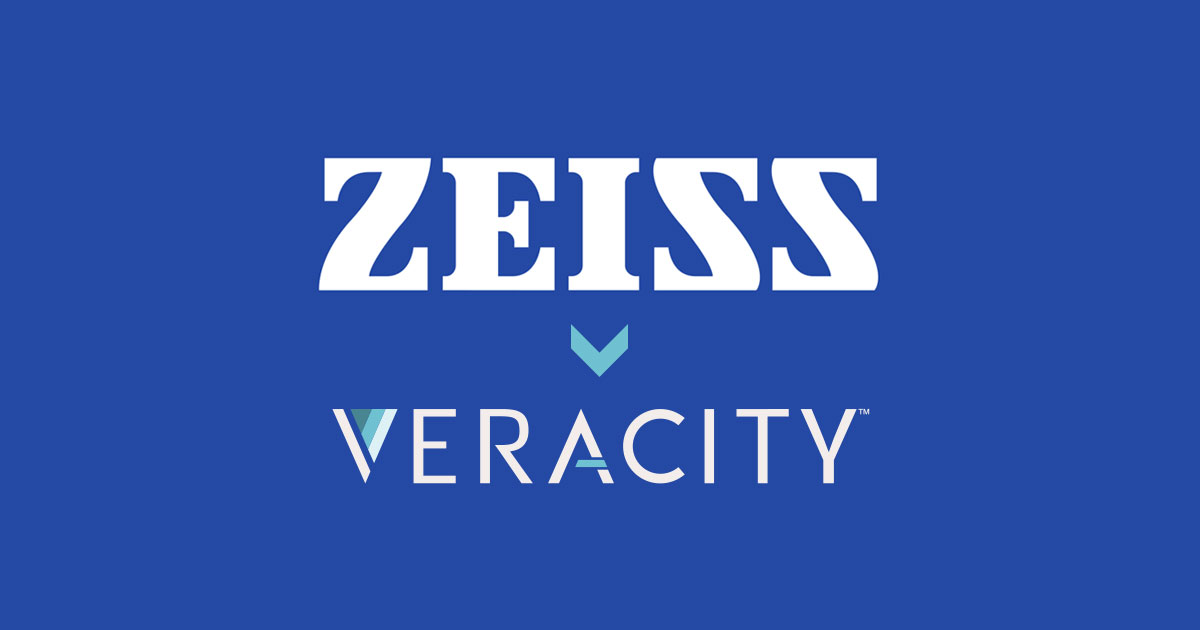What’s Ahead for the Zeiss-Veracity Union

When Veracity Innovations LLC launched its new product at the 2017 American Society of Cataract and Refractive Surgery meeting in Los Angeles, the company was already in talks that led to its acquisition by Carl Zeiss Meditec.
James V. Mazzo, global president, ophthalmic devices for Zeiss, explains that the Veracity system is a cloud-based platform for clinical planning, logistics, treatment, risk management, and analysis. Mazzo says digital technology is one of the critical elements of the formative part of Zeiss’ business, and his team came across Veracity while “investigating other areas of digital technology.”
Veracity wasn’t even fully funded when the founders began having meetings with interested parties, and the Veracity principals decided early on that if Zeiss remained interested, they were interested in Zeiss, says Kyle Smith, MD, one of Veracity’s founders (along with Jeremiah Elliott and Kerry Solomon, MD). They liked that Zeiss has such a big international footprint, because they hope to attain viral adoption of the product around the world.
They also liked that Zeiss is so well known for its diagnostic devices. “That’s just key for us, having our products be able to interface with all these devices,” Dr. Smith says. “It just was a natural marriage of their strengths and our strengths.”
He notes that Zeiss had traditionally been a hardware company, while Veracity is a software company. “So our intent is not only to work on Veracity-related products and our vision as it has been, but also to help Zeiss in integrating all of their hardware in ways that the industry has never seen before,” Dr. Smith says.
Veracity Marries FORUM
Veracity will work in combination with Zeiss’ current eye care data management system, FORUM. The majority of FORUM users have been large teaching institutions, hospitals, and large practices, but Veracity will allow Zeiss to penetrate ambulatory surgery centers (ASCs) in a much broader range than today, Mazzo says, adding that Veracity can easily be integrated into current Zeiss technology and electronic medical records (EMRs).
FORUM gathers information from multiple devices and delivers it to the point of care. Veracity is a workflow-oriented, cloud-based solution that supports specific applications, such as cataract surgery, providing data needed at each step of the process.
Dr. Smith says the system aims to provide doctors with information to help them make decisions they might not otherwise. He points out that cataract surgery planning is more complicated today than in earlier years because of the multitude of options available – different types of intraocular lens (IOL) implants, different diagnostic devices that give many more options, and more data points to consider.
Veracity is not an EMR, but software that interfaces with any EMR system. Dr. Smith further explains that it can be thought of as an EMR-agnostic plug-in. “If you want to be able to make better decisions in planning your cataract surgery, then as long as your EMR interfaces with Veracity, you can access the data you’ll need,” he says. “Veracity takes all the patient-specific data in your EMR and processes it intelligently to make good recommendations around what kind of lens implant you should be putting in your patient.”
Mazzo says cataract surgery is the initial focus for Veracity in the US, where more than 2,000 ASCs perform 75% to 80% of cataract surgeries. He also says that, globally, thousands of eye practitioners and surgeons will benefit from Veracity once the range of applications expands beyond cataract and becomes available outside the US.
Looking Forward to Second Iteration
The Veracity team is in the process now of building the second iteration of the logic that helps generate IOL recommendations. Dr. Smith explains Veracity put together a medical advisory board, whose role is to further develop the product. “We have assembled different experts in different areas of ophthalmology – IOL calculation, dry eye, cataract, glaucoma – all helping us create this product with the intelligence that it needs,” he says.
The next version, scheduled to be released at least in beta in time for the American Academy of Ophthalmology meeting in November, will be geared more toward patient satisfaction. Dr. Smith says the advisory board members helped re-engineer the logic around what patients actually want and request. Veracity is using that input, along with all other data about the patient and the patient’s eye, to formulate a treatment plan that Dr. Smith says “will reduce risk, make full use of modern technology, and improve patient outcomes and satisfaction.”
Terms of the deal are not being released. Veracity will operate as a wholly owned subsidiary of Zeiss. Says Mazzo, “We’re acquiring a company, but it’s not just the product and the technology; it’s people.”
